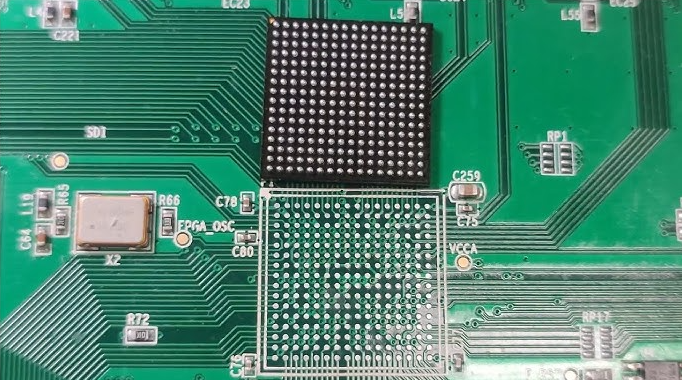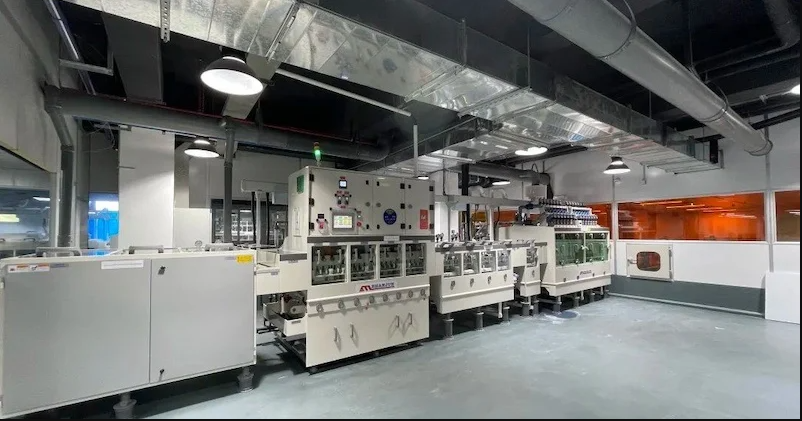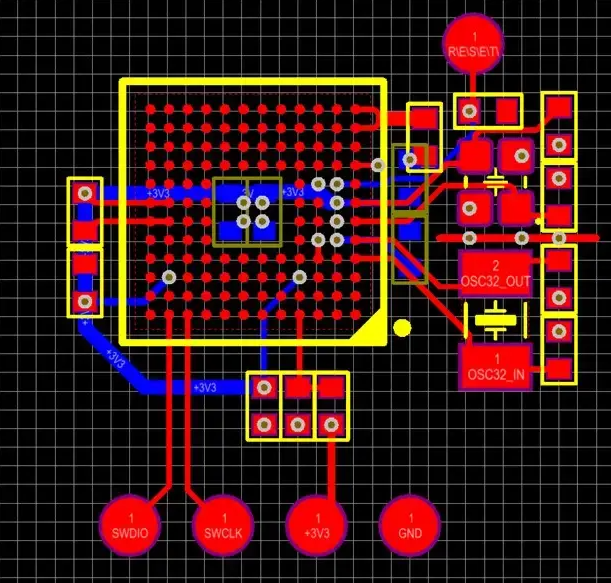Selecting the right PCB vendor for BGA (Ball Grid Array) fabrication can make or break your project. Whether you're designing complex electronics for consumer devices or industrial applications, the vendor you choose directly impacts the quality, reliability, and performance of your printed circuit boards. In this comprehensive guide, we'll walk you through a step-by-step process to help with PCB vendor selection, focusing on BGA PCB fabrication and the broader scope of PCB manufacturing. Let's dive into the details to ensure you partner with a vendor that meets your needs.
Why PCB Vendor Selection Matters for BGA Fabrication
BGA technology is a game-changer in modern electronics, allowing for higher component density and better performance in smaller spaces. However, the complexity of BGA PCB fabrication demands precision and expertise. A single misstep in manufacturing—like poor soldering, incorrect pad design, or inadequate thermal management—can lead to costly failures. Choosing a reliable vendor ensures that your boards meet strict standards for impedance control (often within ±10% tolerance for high-speed signals), signal integrity, and durability. With the right partner, you can avoid delays, reduce costs, and achieve a successful product launch.

Step 1: Define Your Project Requirements for BGA PCB Fabrication
Before you start searching for a vendor, clearly outline your project needs. BGA fabrication often involves specific requirements that not all manufacturers can handle. Consider the following:
- Layer Count and Complexity: BGA designs often require multilayer boards (8 layers or more) to accommodate high pin counts and routing density. Ensure the vendor can handle your layer requirements.
- Material Selection: High-frequency or high-speed applications may need materials like FR-4 with specific dielectric constants (typically around 4.2–4.5) or advanced laminates for better signal performance.
- Thermal Management: BGA components generate significant heat. Check if the vendor offers solutions like thermal vias or metal core PCBs to dissipate heat effectively.
- Impedance Control: For high-speed signals, impedance matching is critical. Look for vendors who can maintain tight tolerances, such as ±5% for controlled impedance traces.
By defining these needs upfront, you create a checklist to evaluate potential vendors against your specific BGA PCB fabrication goals.
Step 2: Assess Vendor Capabilities in PCB Manufacturing
Not all PCB manufacturers are equipped to handle the intricacies of BGA fabrication. When evaluating vendors, focus on their technical capabilities and experience. Here are key factors to consider:
- Experience with BGA Technology: Look for a vendor with a proven track record in producing BGA boards. They should understand challenges like fine-pitch soldering (as small as 0.4mm) and X-ray inspection for hidden solder joints.
- Manufacturing Equipment: Advanced equipment, such as high-precision pick-and-place machines and reflow ovens with tight temperature control (±2°C), is essential for BGA assembly.
- Design Support: Some vendors offer design for manufacturability (DFM) reviews to optimize your BGA layout. This can prevent issues like signal crosstalk or insufficient pad spacing before production starts.
- Quality Certifications: Ensure the vendor complies with industry standards like IPC-A-610 for assembly and ISO 9001 for quality management. These certifications indicate a commitment to consistent, high-quality output.

Step 3: Evaluate Quality Control Processes in PCB Manufacturing
Quality control (QC) is non-negotiable in BGA PCB fabrication. Hidden defects under BGA components can lead to failures that are hard to diagnose and repair. When selecting a vendor, dive into their QC processes:
- Inspection Techniques: Top vendors use X-ray inspection to check solder joint integrity under BGA components. They should also employ Automated Optical Inspection (AOI) for surface-level defects.
- Testing Capabilities: Look for vendors who offer in-circuit testing (ICT) and functional testing to verify signal integrity and board performance. For high-speed designs, ensure they can test for signal loss (typically less than -3 dB at 10 GHz).
- Traceability: A reliable vendor maintains full traceability of materials and processes. This means they can pinpoint the source of any issue, reducing the risk of recurring defects.
Strong QC processes ensure that your boards meet performance expectations and minimize the risk of costly rework.
Step 4: Compare Pricing and Lead Times for PCB Vendor Selection
While quality is paramount, cost and delivery timelines also play a critical role in PCB vendor selection. BGA fabrication often comes at a premium due to its complexity, so balance cost with capability:
- Pricing Transparency: Request detailed quotes that break down costs for design, fabrication, assembly, and testing. Be wary of vendors with hidden fees or unclear pricing structures.
- Volume Discounts: If you're planning high-volume production, check if the vendor offers discounts for larger orders. For example, costs per board can drop significantly for quantities above 1,000 units.
- Lead Times: BGA boards often require longer production times due to additional QC steps. Typical lead times range from 2–4 weeks for standard orders, but rush services (5–7 days) may be available at a higher cost.
Choose a vendor whose pricing aligns with your budget and whose lead times match your project deadlines.
Step 5: Check Vendor Support and Communication
Effective communication can save time and prevent misunderstandings during PCB manufacturing. BGA projects often involve iterative designs and technical challenges, so vendor support is crucial:
- Technical Support: Ensure the vendor provides access to engineers who can assist with design issues or answer questions about BGA-specific requirements.
- Response Time: A responsive vendor can address urgent concerns quickly, keeping your project on track. Look for vendors with 24/7 support or dedicated account managers.
- Prototyping Services: If you're in the early stages of development, select a vendor that offers quick-turn prototyping to test your BGA designs before full-scale production.
A vendor with strong support and clear communication helps streamline the manufacturing process and reduces the risk of errors.

Step 6: Review Vendor Reputation and Reliability
Reputation speaks volumes about a vendor’s reliability in PCB manufacturing. A vendor with a history of delivering quality BGA boards on time is a safer bet. Here’s how to assess their standing:
- Customer Feedback: Look for reviews or testimonials from other engineers or companies. Focus on feedback related to BGA fabrication and complex designs.
- Industry Experience: Vendors with 10+ years in the industry are more likely to have refined their processes for handling advanced technologies like BGA.
- Partnerships: Some vendors collaborate with major electronics companies, which can be a sign of trustworthiness and capability.
Take the time to research and verify the vendor’s track record to avoid partnering with an unreliable manufacturer.
Common Challenges in BGA PCB Fabrication and How a Good Vendor Helps
BGA fabrication comes with unique challenges that require expertise to overcome. A skilled vendor can help you navigate these issues effectively:
- Solder Joint Reliability: Poor soldering can cause open circuits or shorts under BGA components. A good vendor uses precise reflow profiles (peak temperatures around 235–245°C for lead-free solder) to ensure strong joints.
- Warpage Issues: BGA boards can warp due to thermal stress during assembly. Experienced vendors use controlled heating and cooling cycles to minimize warpage (targeting less than 0.75% of board diagonal).
- Signal Integrity: High-speed BGA designs are prone to crosstalk and signal loss. Vendors with expertise in impedance control and advanced routing techniques can maintain signal speeds up to 25 Gbps or higher.
Partnering with a vendor who understands these challenges ensures your BGA boards perform as intended.
Final Tips for Successful PCB Vendor Selection
As you finalize your decision, keep these additional tips in mind to ensure a smooth partnership:
- Start with small orders or prototypes to test the vendor’s quality and reliability before committing to large-scale production.
- Maintain open communication with the vendor throughout the project to address any issues promptly.
- Regularly review the vendor’s performance on quality, delivery, and support to ensure they continue to meet your expectations.
By following these steps and tips, you can confidently select a PCB vendor that excels in BGA PCB fabrication and supports your overall PCB manufacturing needs.
Conclusion: Partnering for BGA Success
Choosing the right PCB vendor for BGA fabrication is a critical decision that impacts the success of your electronics project. By defining your requirements, assessing vendor capabilities, prioritizing quality control, and evaluating support, you can find a partner that delivers high-quality boards on time and within budget. With the complexity of BGA technology, a reliable vendor is your key to achieving optimal performance, whether you're working on high-speed designs or compact consumer devices. Take the time to research and select wisely—your project’s success depends on it.



